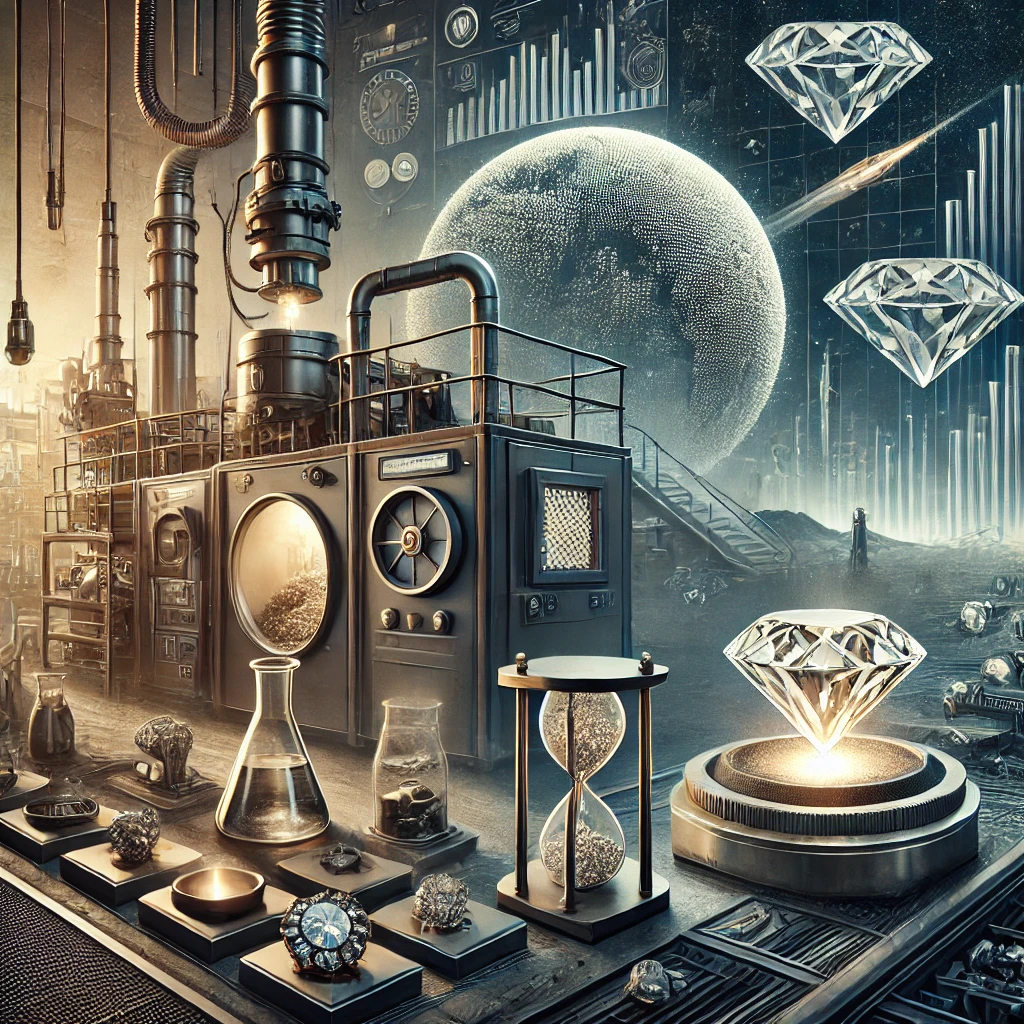
The world of diamonds is often associated with natural beauty and luxury, but another intriguing facet of the diamond industry is the development of synthetic diamonds. These man-made gems, often indistinguishable from their natural counterparts, have a rich history filled with scientific discovery, innovation, and even controversy. This article explores the journey of synthetic diamonds from early experimentation to their current status in the market.
The Early Days: Dreams of Artificial Gems
The concept of creating diamonds in a laboratory has fascinated scientists and jewellers for centuries. The first successful synthesis of diamond was achieved in the mid-20th century by General Electric (GE) in 1954. This groundbreaking achievement involved replicating the extreme conditions found deep within the Earth, using high pressure and high temperature (HPHT) techniques. These early synthetic diamonds were primarily used for industrial purposes, such as cutting and grinding, due to their unparalleled hardness.
The Evolution of Synthetic Diamond Technology
As technology advanced, so did the methods for creating synthetic diamonds. In the 1970s, chemical vapour deposition (CVD) emerged as a new technique. This method allows diamonds to be grown at lower pressures and temperatures, making the process more accessible and cost-effective. CVD has opened the door to producing high-quality diamonds that are virtually identical to natural ones, both in appearance and physical properties.
From Industrial to Jewellery: The Shift in Perception
Initially, synthetic diamonds were valued mainly for their industrial applications. However, the 21st century saw a shift as these lab-grown gems began to enter the jewellery market. Advances in CVD and HPHT technologies have made it possible to produce gem-quality synthetic diamonds that appeal to consumers seeking ethical and sustainable alternatives to natural diamonds. This shift has sparked a debate within the industry about the definition and value of diamonds, with synthetic diamonds gaining acceptance as a legitimate and desirable option.
Ethical and Environmental Considerations
One of the most compelling aspects of synthetic diamonds is their potential to address ethical and environmental concerns associated with natural diamond mining. Lab-grown diamonds do not involve the environmental degradation or ethical issues linked to some traditional mining practices. This has made them an attractive choice for consumers who prioritise sustainability and social responsibility in their purchases.
The Future of Synthetic Diamonds
The future of synthetic diamonds looks bright, with ongoing advancements in technology and growing consumer acceptance. As the industry continues to innovate, we may see even more affordable and diverse options in the market. Additionally, the ability to create custom diamonds with unique colours and properties offers exciting possibilities for both consumers and designers.
Synthetic diamonds, once the stuff of science fiction, have become a significant and respected part of the diamond industry. Whether sought for their ethical appeal, unique qualities, or innovative origins, these lab-grown gems offer a fascinating alternative to natural diamonds, enriching the market and expanding consumer choices.

